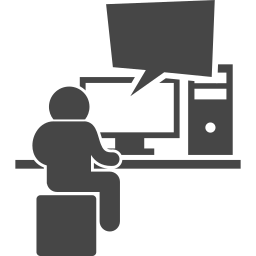 The Science of Breath
The Science of Breath
The Science of Breath

-
Main Ideas
Learning Objective
Understand the physiological relationship between stress and breathing, and learn how intentional breathwork techniques, such as diaphragmatic and box breathing, promote physical, mental, and emotional well-being by engaging the body's natural relaxation response.
Behavioral Objective
Incorporate intentional breathing exercises into daily routines to reduce stress, enhance focus, and foster resilience in challenging situations.
Key Thought
Mastering your breath is the key to calming the mind, energizing the body, and building a foundation for lifelong resilience and balance.
-
Main Ideas
Learning Objective
Understand the physiological relationship between stress and breathing, and learn how intentional breathwork techniques, such as diaphragmatic and box breathing, promote physical, mental, and emotional well-being by engaging the body's natural relaxation response.
Behavioral Objective
Incorporate intentional breathing exercises into daily routines to reduce stress, enhance focus, and foster resilience in challenging situations.
Key Thought
Mastering your breath is the key to calming the mind, energizing the body, and building a foundation for lifelong resilience and balance.
-
Terms
- Autonomic Nervous System
noun
The part of the nervous system responsible for involuntary actions, such as heartbeat and digestion, and includes the "fight or flight" and "rest and relax" states.
- Deep Breathing
noun
A conscious breathing technique that involves slow, deep inhalations and exhalations, often used to reduce stress and promote relaxation.
- Diaphragm
noun
The primary muscle of respiration, located below the lungs, that contracts and relaxes to facilitate breathing.
- Muscle Plasticity
noun
The ability of muscles to adapt in response to usage or disuse, becoming stronger or more efficient with training or atrophying when unused.
- Respiratory System
-
Terms
- Autonomic Nervous System
noun
The part of the nervous system responsible for involuntary actions, such as heartbeat and digestion, and includes the "fight or flight" and "rest and relax" states.
- Deep Breathing
noun
A conscious breathing technique that involves slow, deep inhalations and exhalations, often used to reduce stress and promote relaxation.
- Diaphragm
noun
The primary muscle of respiration, located below the lungs, that contracts and relaxes to facilitate breathing.
- Muscle Plasticity
noun
The ability of muscles to adapt in response to usage or disuse, becoming stronger or more efficient with training or atrophying when unused.
- Respiratory System
Introduction
Breathing is an automatic process essential for survival, yet it holds untapped potential for enhancing physical, mental, and emotional well-being. We can calm stress responses, increase focus, and build resilience against life's challenges through conscious breath control. This topic explores the physiological mechanisms of breath, its connection to the nervous system, and practical strategies to harness its transformative power.
How Stress Affects Breath
Stress triggers the body's "fight or flight" response, causing rapid, shallow breathing that disrupts the natural balance of oxygen and carbon dioxide. This reaction, designed for survival, diverts energy away from non-essential functions like digestion and immune response, prioritizing immediate action instead. Over time, chronic stress and poor breathing habits can contribute to physical and mental health issues, including fatigue, anxiety, and inflammation.
Key signs of stress-related breathing dysfunction include:
- Rapid, shallow breaths
- Feeling breathless or tightness in the chest
- Frequent yawning or sighing
- Difficulty focusing or maintaining energy
The Physiology of Breath
The respiratory system is more than a mechanism for oxygen delivery; it is deeply interconnected with the nervous system. Controlled breathing can activate the parasympathetic nervous system, often called the "rest and relax" mode, counteracting the stress-induced sympathetic "fight or flight" response.
The diaphragm, a dome-shaped muscle beneath the lungs, plays a critical role in effective breathing. When engaged properly, diaphragmatic breathing reduces effort, optimizes oxygen exchange, and promotes a state of calm.
The Role of Breath in Managing Stress
Stress-related health issues, such as hypertension, poor digestion, and chronic inflammation, often stem from overactivation of the sympathetic nervous system. Conscious breathing techniques provide a simple yet powerful way to break this cycle and restore equilibrium. By practicing mindful breathwork, you can:
- Reduce cortisol levels
- Enhance oxygen delivery to tissues
- Promote mental clarity and focus
- Regulate heart rate and blood pressure
- Increase resilience to daily stressors
Practical Breathing Techniques
Two evidence-based techniques to improve breath control and manage stress include:
Diaphragmatic Breathing
- Find a comfortable position, lying down or seated with your back supported.
- Place one hand on your chest and the other on your abdomen.
- Inhale deeply through your nose, ensuring your abdomen rises while your chest remains still.
- Exhale slowly through your mouth, feeling your abdomen fall.
- Repeat for 5-10 minutes daily to strengthen your diaphragm and establish a calming routine.
Box Breathing
- Inhale deeply through your nose for a count of 4.
- Hold your breath for a count of 4.
- Exhale slowly through your mouth for a count of 4.
- Hold your breath for another count of 4.
- Repeat this cycle for 5-10 minutes, focusing on maintaining even, controlled breaths.
Connecting Breath to Mind and Body
Breath is the bridge between the conscious and subconscious mind. By engaging in breathwork, you can gain greater control over involuntary stress responses, fostering emotional balance and physical resilience. Research shows consistent breathwork enhances vagal tone, promoting better heart rate variability, a key marker of overall well-being.
Final Thoughts
The science of breath offers a practical, accessible pathway to calm, focus, and resilience. By understanding how stress impacts breathing and adopting conscious techniques, you can actively manage your well-being. Remember, every breath is an opportunity to reset and refocus. Embrace the power of your breath as a tool for navigating life's challenges with confidence and clarity.
Diaphragmatic Breathing Practice
Objective: Learn and practice diaphragmatic breathing to improve respiratory efficiency and promote relaxation.
- Find a comfortable position: Lie on your back with knees bent or sit upright in a chair.
- Place one hand on your chest and the other on your abdomen to monitor movement.
- Inhale deeply through your nose, ensuring that only your abdomen rises while your chest remains still.
- Exhale slowly through pursed lips, allowing your abdomen to fall. Repeat for 5-10 minutes.
Breathing Awareness Exercise
Objective: Build awareness of your natural breathing pattern and learn how to make conscious adjustments for stress reduction.
- Sit quietly in a distraction-free environment and close your eyes.
- Observe your breath: Note its rhythm, depth, and where you feel it in your body (chest, abdomen, etc.).
- Begin to deepen your breaths: Inhale for a count of 4, hold for 2, and exhale for a count of 6. Continue for 5 minutes.
- Reflect on how this change in breathing feels compared to your natural rhythm.
Create a Daily Breathing Routine
Objective: Develop a personalized daily routine to integrate conscious breathing techniques into your life for enhanced focus and calm.
- Set aside 5-10 minutes each morning for deep breathing exercises.
- Use prompts like a reminder on your phone or pairing the practice with a daily activity (e.g., before breakfast).
- Rotate through different techniques, such as diaphragmatic breathing, alternate nostril breathing, or victorious breathing, to keep your routine engaging.
Course Outline
![]() Session Expired from Inactivity
Session Expired from Inactivity
Do you want to?
9618 Jefferson Highway, Suite D-191
Baton Rouge LA 70809-9636
(888) 424-0032 |
support@supplementrelief.com
* Disclaimer: This page is available exclusively for SupplementRelief.com clients. None of the information on this website is intended to replace your relationship with your healthcare provider(s). Nothing should be considered medical advice. The information, knowledge, and experience shared on this website are the opinions of SupplementRelief.com. This site and its content are intended to enhance your knowledge base as YOU MAKE YOUR OWN HEALTHCARE DECISIONS in partnership with your qualified health professional.
* These statements have not been evaluated by the Food and Drug Administration. These products and services are not intended to diagnose, treat, cure, or prevent disease.
* There is NO GUARANTEE OF SPECIFIC RESULTS for the products or services offered, and the RESULTS CAN VARY for each individual. Any results claimed by our customers are based on individual experiences that are unique and cannot be guaranteed.
FirstFitness Nutrition and NuMedica may be promoted and sold on the internet ONLY by Authorized Resellers who have been approved by and have registered their website domain with these companies. They strictly prohibit, and actively monitor, the UNAUTHORIZED SALE or RESALE of their products in ALL online public shopping portals including Amazon, eBay, and others and into other countries. All products purchased in SupplementRelief.com are for PERSONAL USE ONLY and CANNOT BE RESOLD to others. Please report violations of Reseller Policy directly to FirstFitness Nutrition at 800.621.4348 and to NuMedica at 800.869.8100.
The content and photographs on this website are copyrighted or Licensed Material and may not be downloaded for other than personal use. Republication, retransmission, reproduction, or any other use of the content or photographs is prohibited. ©2010-2024 SupplementRelief.com.
Are you sure you want to remove this item?


